-
 Bitcoin
Bitcoin $116800
0.71% -
 Ethereum
Ethereum $4211
6.94% -
 XRP
XRP $3.276
1.68% -
 Tether USDt
Tether USDt $1.000
0.02% -
 BNB
BNB $807.0
3.00% -
 Solana
Solana $180.5
3.24% -
 USDC
USDC $0.9999
0.01% -
 Dogecoin
Dogecoin $0.2406
9.02% -
 TRON
TRON $0.3357
-1.10% -
 Cardano
Cardano $0.8047
3.16% -
 Hyperliquid
Hyperliquid $43.81
7.97% -
 Chainlink
Chainlink $21.08
10.16% -
 Stellar
Stellar $0.4506
1.97% -
 Sui
Sui $3.916
4.69% -
 Bitcoin Cash
Bitcoin Cash $568.3
-1.85% -
 Hedera
Hedera $0.2628
2.48% -
 Avalanche
Avalanche $24.17
4.54% -
 Ethena USDe
Ethena USDe $1.001
0.03% -
 Litecoin
Litecoin $121.4
0.35% -
 Toncoin
Toncoin $3.408
2.28% -
 UNUS SED LEO
UNUS SED LEO $8.978
-0.08% -
 Shiba Inu
Shiba Inu $0.00001376
7.59% -
 Uniswap
Uniswap $10.86
2.94% -
 Polkadot
Polkadot $4.079
5.33% -
 Dai
Dai $1.000
0.02% -
 Pepe
Pepe $0.00001231
10.28% -
 Bitget Token
Bitget Token $4.502
0.79% -
 Cronos
Cronos $0.1576
3.63% -
 Monero
Monero $271.1
0.48% -
 Ethena
Ethena $0.7336
18.38%
What are Arbitrum and Optimism and how do they improve Ethereum efficiency?
Arbitrum and Optimism use optimistic rollups to enhance Ethereum's efficiency, reducing fees and increasing transaction speeds for a better user experience.
Apr 15, 2025 at 01:56 pm
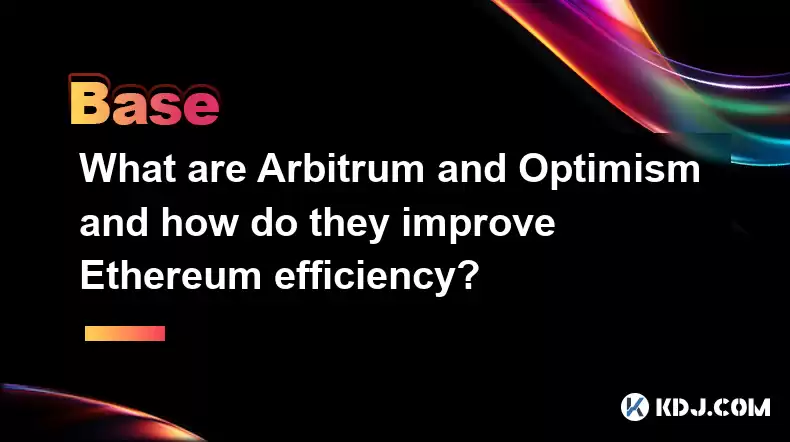
Arbitrum and Optimism are two prominent layer-2 scaling solutions designed to enhance the efficiency of the Ethereum blockchain. These solutions aim to address the issues of high transaction fees and slow transaction speeds that have long plagued Ethereum, making it more accessible and efficient for users.
What is Arbitrum?
Arbitrum is a layer-2 scaling solution that uses optimistic rollups to increase the throughput of the Ethereum network. Developed by Offchain Labs, Arbitrum allows for the execution of smart contracts off the main Ethereum chain, thereby reducing the load on the network and significantly lowering transaction fees.
The core mechanism of Arbitrum is based on the concept of optimistic rollups. This means that transactions are processed off-chain and then periodically batched and submitted to the Ethereum mainnet. The system assumes that transactions are valid unless challenged, which helps in reducing the computational burden on the Ethereum network.
To use Arbitrum, users need to follow these steps:
- Bridge assets to Arbitrum: Users must transfer their Ethereum and ERC-20 tokens to the Arbitrum network using the Arbitrum bridge. This can be done through the official Arbitrum bridge interface.
- Interact with dApps on Arbitrum: Once assets are bridged, users can interact with decentralized applications (dApps) built on Arbitrum, enjoying lower fees and faster transaction times.
- Withdraw assets from Arbitrum: To move assets back to the Ethereum mainnet, users must initiate a withdrawal through the Arbitrum bridge, which involves a challenge period to ensure transaction validity.
What is Optimism?
Optimism is another layer-2 scaling solution that also employs optimistic rollups to enhance Ethereum's scalability. Developed by the Optimism team, this solution aims to provide a seamless experience for Ethereum users by reducing gas costs and increasing transaction speeds.
Similar to Arbitrum, Optimism processes transactions off-chain and submits them to the Ethereum mainnet in batches. The key feature of Optimism is its EVM (Ethereum Virtual Machine) equivalence, which means that smart contracts written for Ethereum can be deployed on Optimism without modification.
To get started with Optimism, users should:
- Bridge assets to Optimism: Users need to transfer their Ethereum and ERC-20 tokens to the Optimism network using the Optimism bridge. This process can be initiated through the Optimism gateway.
- Use Optimism dApps: After bridging assets, users can interact with dApps on the Optimism network, benefiting from reduced fees and faster transaction processing.
- Withdraw assets from Optimism: To return assets to the Ethereum mainnet, users must use the Optimism bridge to initiate a withdrawal, which includes a challenge period to verify transaction integrity.
How Do Arbitrum and Optimism Improve Ethereum Efficiency?
Both Arbitrum and Optimism significantly improve the efficiency of the Ethereum network through several key mechanisms:
- Reduced Transaction Fees: By processing transactions off-chain and batching them before submitting them to the Ethereum mainnet, both solutions drastically reduce the gas costs associated with each transaction. This makes it more cost-effective for users to interact with the Ethereum ecosystem.
- Increased Transaction Throughput: The use of optimistic rollups allows for a higher number of transactions to be processed per second. This increase in throughput means that the network can handle more transactions without becoming congested, leading to faster confirmation times.
- Improved User Experience: With lower fees and faster transaction times, users experience a smoother and more efficient interaction with dApps and other Ethereum-based services. This improvement in user experience can lead to greater adoption and utilization of the Ethereum network.
Key Differences Between Arbitrum and Optimism
While both Arbitrum and Optimism use optimistic rollups to enhance Ethereum's scalability, there are some notable differences between the two solutions:
- Development Approach: Arbitrum focuses on providing a more flexible and customizable environment for developers, allowing for the deployment of complex smart contracts. In contrast, Optimism emphasizes EVM equivalence, making it easier for developers to port existing Ethereum smart contracts to its network without modifications.
- Security Model: Arbitrum employs a more sophisticated fraud-proof mechanism, which allows for faster dispute resolution and greater security. Optimism, on the other hand, uses a simpler fraud-proof system that relies on a challenge period to ensure transaction validity.
- Community and Ecosystem: Both solutions have their own growing ecosystems of dApps and users. Arbitrum has seen significant adoption from major DeFi projects, while Optimism has focused on fostering a community-driven approach to development and governance.
Using Arbitrum and Optimism in Practice
To illustrate the practical benefits of using Arbitrum and Optimism, consider the following examples:
- DeFi Transactions: A user looking to engage in decentralized finance (DeFi) activities, such as lending or swapping tokens, can use either Arbitrum or Optimism to execute these transactions at a fraction of the cost and with much faster confirmation times compared to the Ethereum mainnet.
- NFT Trading: For those involved in trading non-fungible tokens (NFTs), using Arbitrum or Optimism can significantly reduce the gas fees associated with buying, selling, or transferring NFTs, making the process more economical and efficient.
- Gaming and dApps: Developers of gaming dApps can deploy their applications on Arbitrum or Optimism to provide a better user experience with lower transaction costs and faster gameplay interactions, attracting more users to their platforms.
Frequently Asked Questions
Q: Can I use the same wallet for both Arbitrum and Optimism?
A: Yes, you can use the same Ethereum-compatible wallet, such as MetaMask, to interact with both Arbitrum and Optimism. However, you will need to add the respective network configurations to your wallet to access each network.
Q: Are there any risks associated with using Arbitrum and Optimism?
A: While both solutions aim to enhance security through their optimistic rollup mechanisms, there are inherent risks associated with any layer-2 solution. These include potential delays in withdrawals due to the challenge period and the risk of smart contract vulnerabilities. Users should stay informed about the latest security updates and best practices.
Q: How do I choose between Arbitrum and Optimism for my dApp?
A: The choice between Arbitrum and Optimism depends on your specific needs. If you prioritize flexibility and the ability to deploy complex smart contracts, Arbitrum might be the better choice. If you prefer EVM equivalence and a simpler transition from the Ethereum mainnet, Optimism could be more suitable. Consider factors such as the ecosystem, community support, and the specific features each platform offers.
Q: Can I bridge assets between Arbitrum and Optimism?
A: Currently, there is no direct bridge between Arbitrum and Optimism. To move assets between the two networks, you would need to first withdraw your assets to the Ethereum mainnet and then bridge them to the other layer-2 solution. This process involves additional transaction fees and time due to the challenge periods on both networks.
Disclaimer:info@kdj.com
The information provided is not trading advice. kdj.com does not assume any responsibility for any investments made based on the information provided in this article. Cryptocurrencies are highly volatile and it is highly recommended that you invest with caution after thorough research!
If you believe that the content used on this website infringes your copyright, please contact us immediately (info@kdj.com) and we will delete it promptly.
- AI Coin Mania: Dubai Millionaires Eye 20x Gains!
- 2025-08-09 23:10:12
- ChatGPT's Hot Takes: Meme Coins to Buy Now for a Wild 2025!
- 2025-08-09 23:10:12
- Jurassic Park Vibes in Your Pocket: The Colourful Canadian Coin Featuring a Dinosaur Eye
- 2025-08-09 23:50:12
- Altcoins on the Radar: VeChain, Ethereum, and the Shifting Crypto Landscape
- 2025-08-09 23:50:12
- Crypto Airdrops & Opportunities: What's Hot in August 2025
- 2025-08-09 22:30:12
- XRP, Cardano, and the Alluring Alternatives: A 2025 Crypto Landscape
- 2025-08-09 22:35:12
Related knowledge
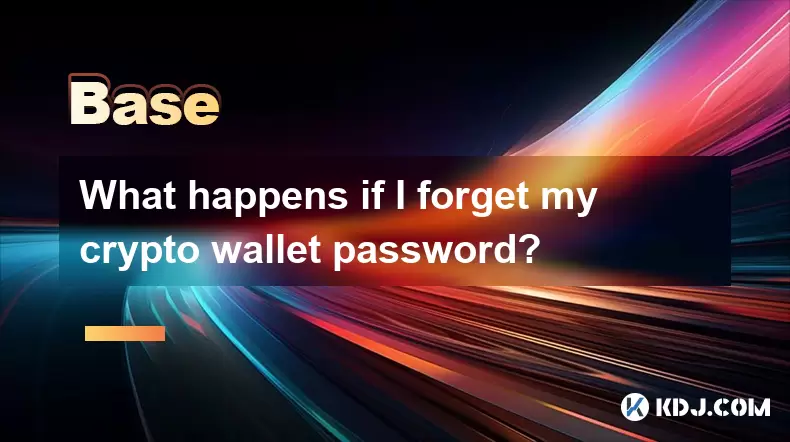
What happens if I forget my crypto wallet password?
Aug 09,2025 at 08:50am
Understanding the Role of a Crypto Wallet PasswordA crypto wallet password serves as a critical security layer that protects access to your digital as...

Can you reuse a crypto wallet address?
Aug 08,2025 at 03:49pm
Understanding Wallet Addresses in CryptocurrencyA crypto wallet address is a unique identifier used to send and receive digital assets on a blockchain...
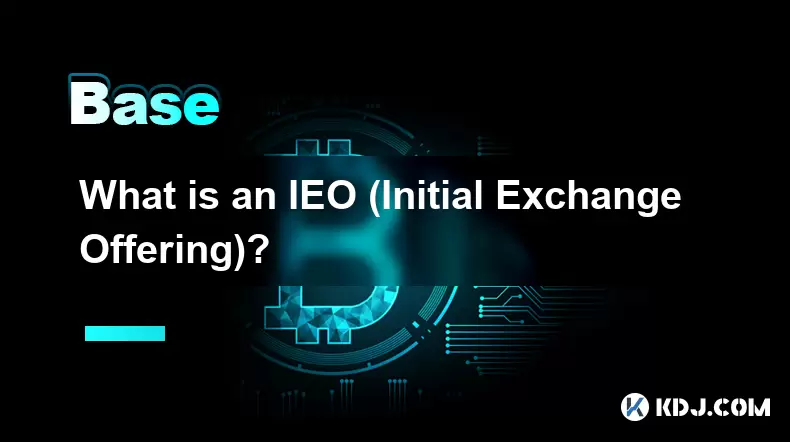
What is an IEO (Initial Exchange Offering)?
Aug 09,2025 at 06:22am
Understanding the Concept of IEO (Initial Exchange Offering)An Initial Exchange Offering (IEO) is a fundraising method used by blockchain-based projec...
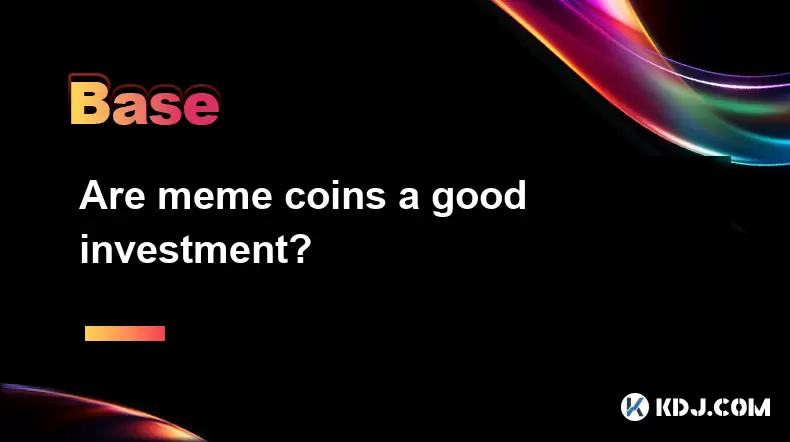
Are meme coins a good investment?
Aug 08,2025 at 11:36pm
Understanding Meme Coins and Their OriginsMeme coins are a category of cryptocurrencies that originated from internet humor or viral trends rather tha...
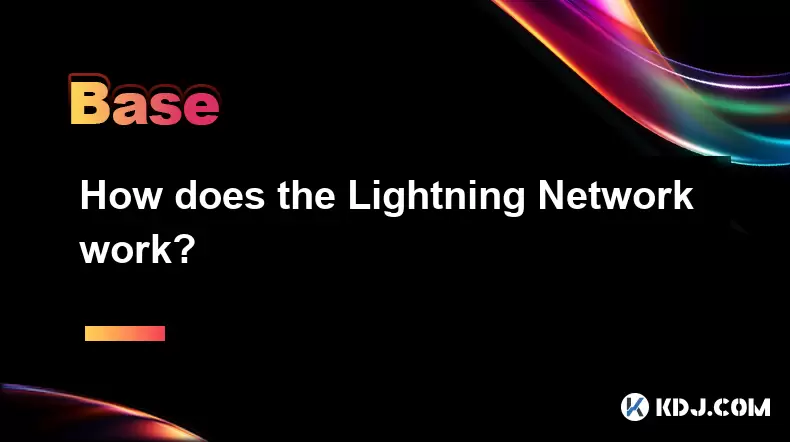
How does the Lightning Network work?
Aug 09,2025 at 07:15pm
What Is the Lightning Network?The Lightning Network is a second-layer scaling solution built on top of blockchain networks, primarily Bitcoin, designe...
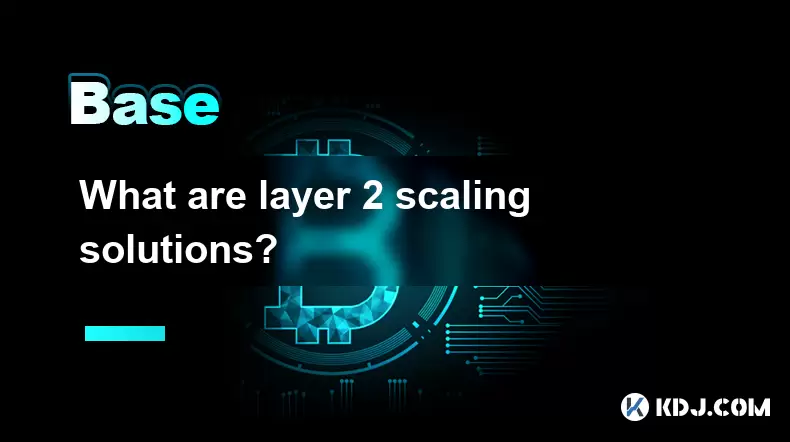
What are layer 2 scaling solutions?
Aug 09,2025 at 04:07am
Understanding Layer 2 Scaling Solutions in CryptocurrencyIn the world of blockchain and cryptocurrencies, scalability has long been a pressing challen...

What happens if I forget my crypto wallet password?
Aug 09,2025 at 08:50am
Understanding the Role of a Crypto Wallet PasswordA crypto wallet password serves as a critical security layer that protects access to your digital as...

Can you reuse a crypto wallet address?
Aug 08,2025 at 03:49pm
Understanding Wallet Addresses in CryptocurrencyA crypto wallet address is a unique identifier used to send and receive digital assets on a blockchain...

What is an IEO (Initial Exchange Offering)?
Aug 09,2025 at 06:22am
Understanding the Concept of IEO (Initial Exchange Offering)An Initial Exchange Offering (IEO) is a fundraising method used by blockchain-based projec...

Are meme coins a good investment?
Aug 08,2025 at 11:36pm
Understanding Meme Coins and Their OriginsMeme coins are a category of cryptocurrencies that originated from internet humor or viral trends rather tha...

How does the Lightning Network work?
Aug 09,2025 at 07:15pm
What Is the Lightning Network?The Lightning Network is a second-layer scaling solution built on top of blockchain networks, primarily Bitcoin, designe...

What are layer 2 scaling solutions?
Aug 09,2025 at 04:07am
Understanding Layer 2 Scaling Solutions in CryptocurrencyIn the world of blockchain and cryptocurrencies, scalability has long been a pressing challen...
See all articles

























































































